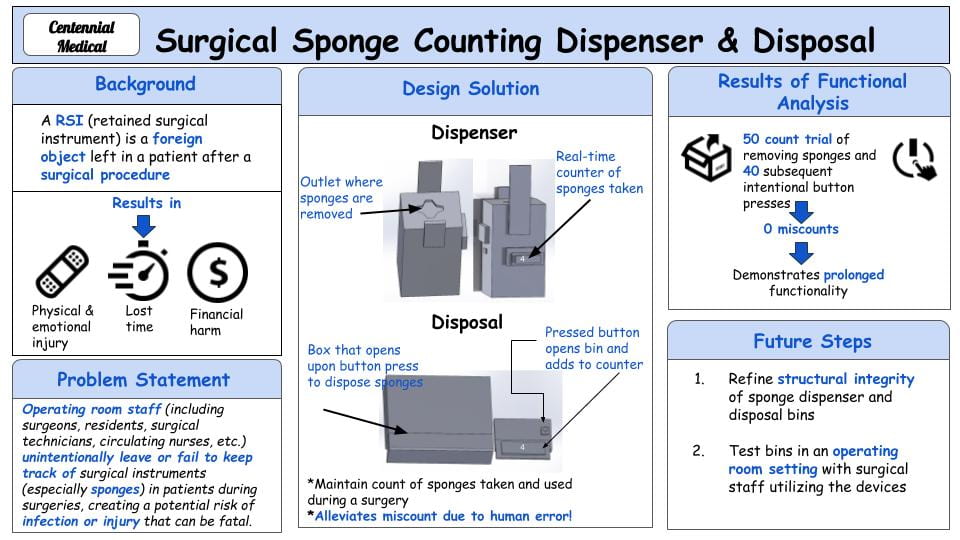Creating a novel approach to improving surgical sponge traceability in the OR
Student Team: Centennial Medical
Sami Belhareth, Solange Amigues, Zhihao Wang, Madhuri Jois, Tue Dinh Vu,
Project Description:
A retained surgical instrument (RSI) is an unintended retained foreign object left in a patient after a surgical procedure. One in every 5,500 surgeries results in a RSI, with a surgical sponge being the most common item. However, this statistic is expected to be an underestimate due to the lack of federal requirements for hospitals to publicly report these incidents. Surgical technicians and circulating nurses are responsible for keeping a manual count of all surgical instruments in operating rooms. During intense emergency situations or long procedures with multiple hand-offs, keeping count of and tracking instruments is very difficult. RSIs pose a serious risk to a patient’s emotional and physical health that can be fatal. Moreover, valuable time is lost to resolving miscounts, further diagnosis, and surgeries for RSI removal. Hospitals also can spend millions annually to cover the legal costs of RSI incidents. To keep sponges accounted for, our team – Centennial Medical – designed and built a surgical sponge dispenser and disposal system that automatically counts the sponges used during a surgical procedure. The dispenser uses a time of flight sensor which tracks a spring loaded platform that displaces when a sponge is taken out. The disposal utilizes a mechanical button that operates the disposal lid and adds one to the used sponge count for every press. We employed rigorous testing to confirm our devices accurately count against different types of pulling and pressing motions by varying action speed, force, and angle. Overall, our devices allow users to track the entire life cycle of a surgical sponge and verify that the sponge count is accurate. Moving forward, we hope to refine the structural integrity of the devices and prove that they can be sterilized with pre-existing hospital equipment, as well as conduct testing in an actual operating room setting.

